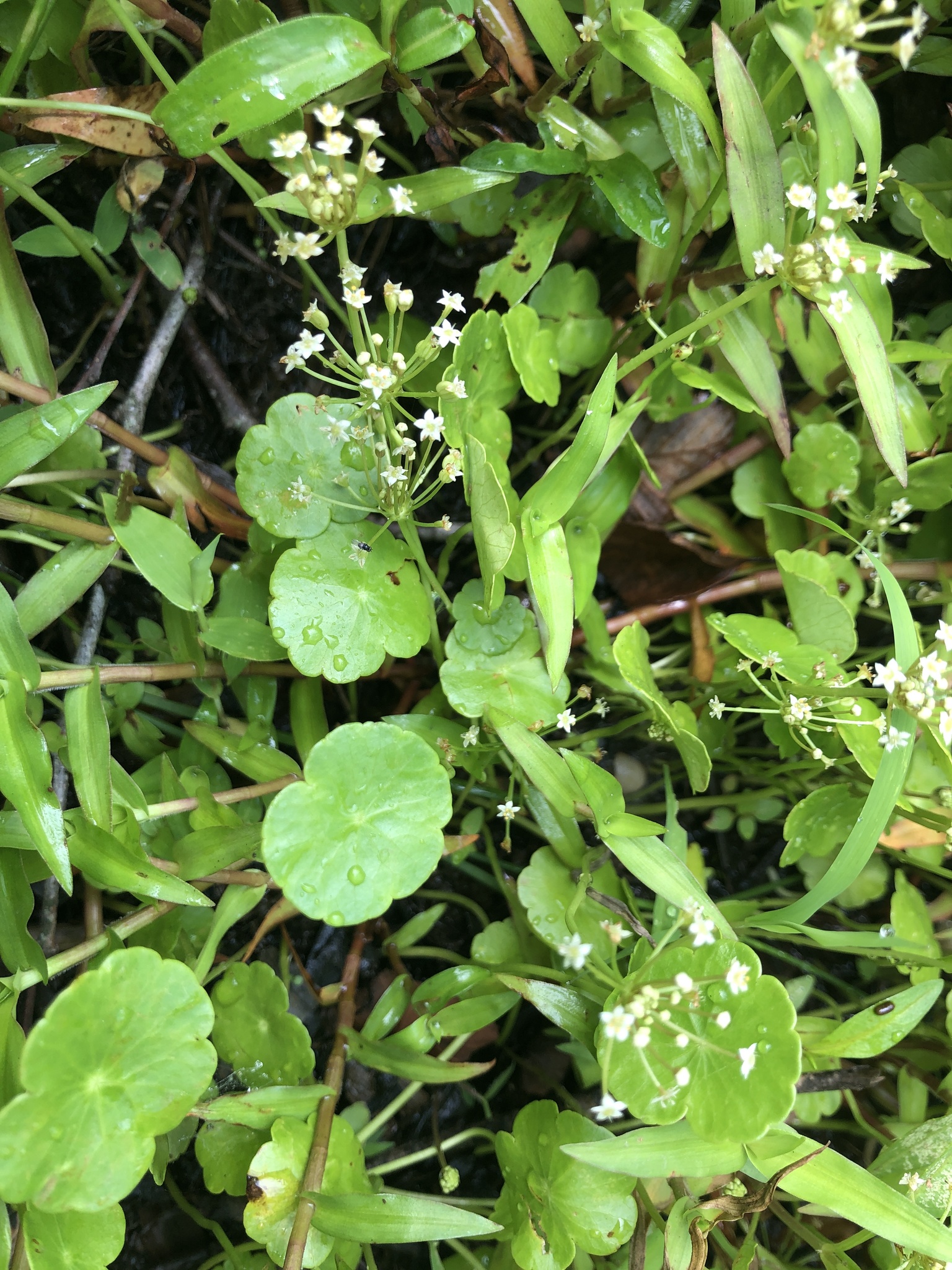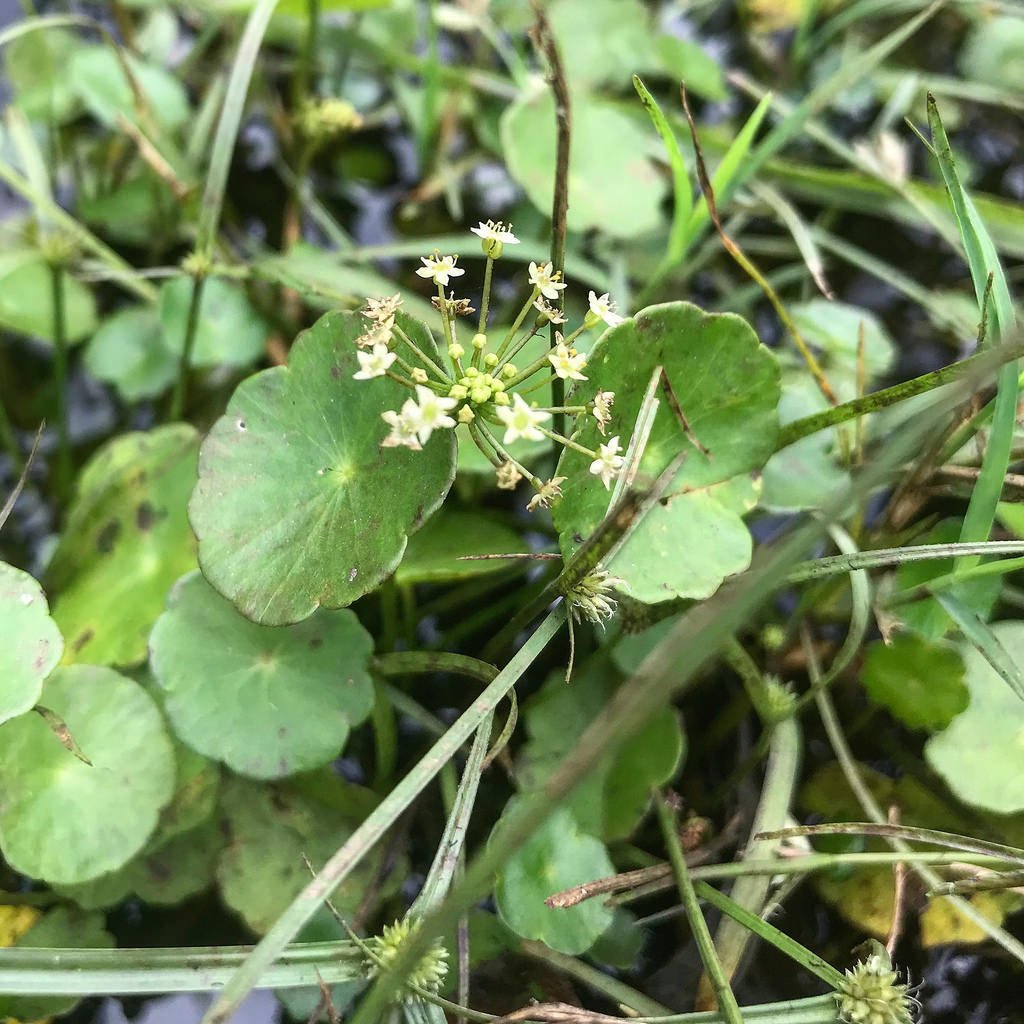Map Snapshot














92 Records
Seasonality Snapshot
Source: Wikipedia
| Hydrocotyle umbellata | |
|---|---|

| |
| Dollarweed in an aquatic plant shop | |
| Scientific classification | |
| Kingdom: | Plantae |
| Clade: | Tracheophytes |
| Clade: | Angiosperms |
| Clade: | Eudicots |
| Clade: | Asterids |
| Order: | Apiales |
| Family: | Araliaceae |
| Genus: | Hydrocotyle |
| Species: | H. umbellata
|
| Binomial name | |
| Hydrocotyle umbellata | |
Hydrocotyle umbellata is an aquatic plant that thrives in wet, sandy habitat. Its English common name is manyflower marshpennywort or dollarweed. It is native to North America and parts of South America. In Brazil it is known as acariçoba and has applications in herbal medicine with purported anxiolytic, analgesic and anti-inflammatory properties.[2] It can also be found growing as an introduced species and sometimes a noxious weed on other continents. It is an edible weed that can be used in salads or as a pot herb.[3][4]
Description
[edit]They are aquatic or underwater herbs, floating or creeping, slightly succulent. The leaves are peltate, orbicular, 0.5–7.5 cm in diameter, crenate or slightly 8–20-lobed; petiole thin, 0.5–40 cm long. Inflorescences in the form of simple umbels with 10–60 flowers or a few peduncles proliferating and embracing whorls of slender-pedicellate flowers, peduncles usually slightly longer than the leaves. Ellipsoid fruit, 1–3 mm in diameter, with obvious and obtuse ribs.
References
[edit]- ^ Maiz-Tome, L. (2016). "Hydrocotyle umbellata". IUCN Red List of Threatened Species. 2016: e.T64314702A67729706. doi:10.2305/IUCN.UK.2016-1.RLTS.T64314702A67729706.en. Retrieved 7 January 2023.
- ^ Oliveira TL, Morais SR, Sá S, Oliveira MG, Florentino IF, Silva DM, et al. (November 2017). "Antinociceptive, anti-inflammatory and anxiolytic-like effects of the ethanolic extract, fractions and Hibalactone isolated from Hydrocotyle umbellata L. (Acariçoba) - Araliaceae". Biomedicine & Pharmacotherapy. 95: 837–846. doi:10.1016/j.biopha.2017.08.140. PMID 28903179.
- ^ Lantz PS, Deuerling RJ, et al. (Florida Native Plant Society) (2021). Florida's Incredible Wild Edibles (2nd ed.). Sarasota: Rowman & Littlefield. p. 13. ISBN 978-1-68334-279-3.
- ^ "Pennyworts Making Sense". Eat the Weeds. Green Deane, LLC. 2012.
External links
[edit]
















